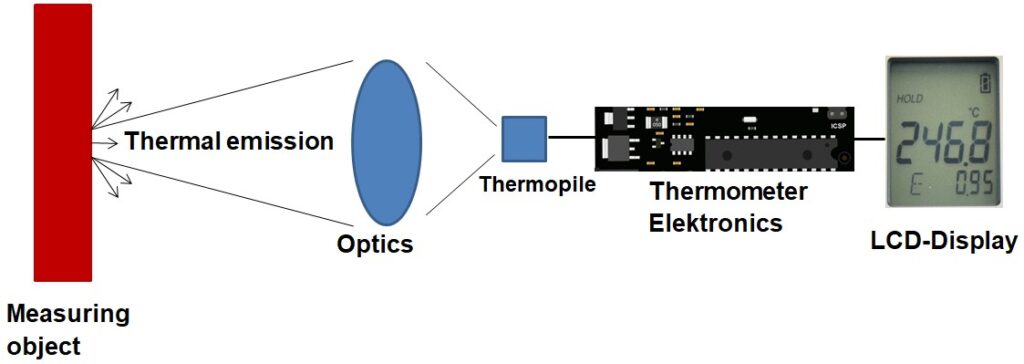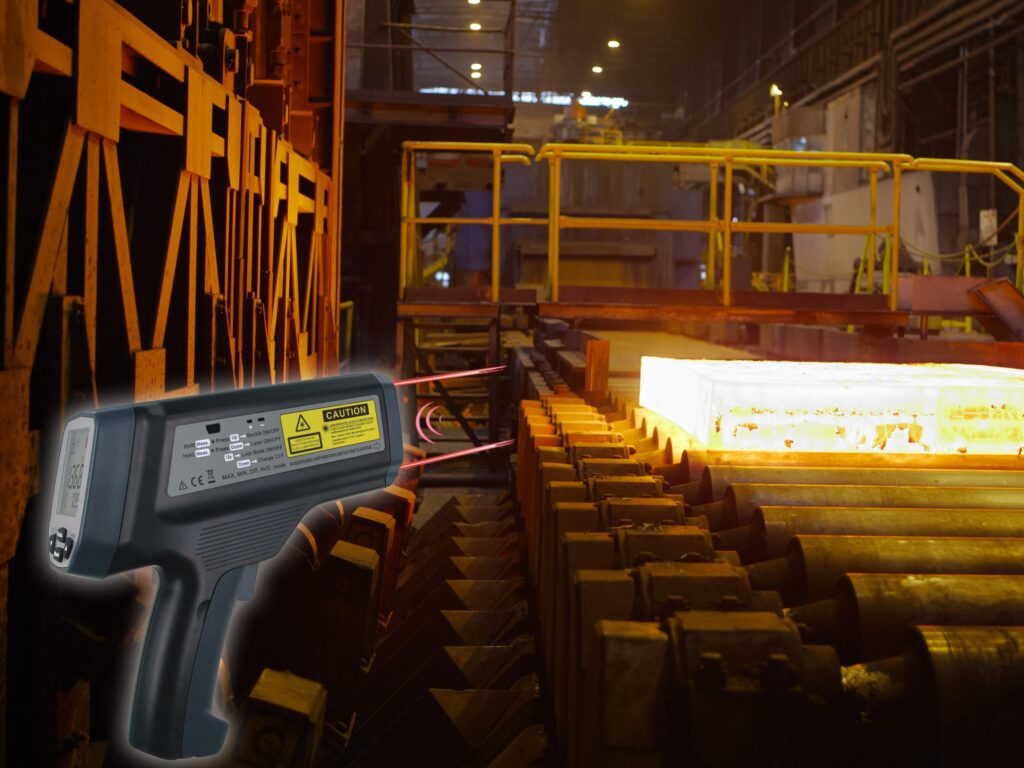Portable pyrometers/handheld devices are usually referred to as infrared thermometers. The most common form of infrared thermometer today is the pistol shape (see picture below).
With infrared thermometers, the electromagnetic radiation emitted by the object being measured is converted into a measured value which is shown on the device’s LCD display.
When the emissivity factor is correct setted, the measured temperature value corresponds to the surface temperature of the object being measured. For infrared thermometers with an integrated laser pointer, precise non-contact temperature measurement is possible thanks to exact alignment with the measurement object.
Functionality

1. The measurement object emits electromagnetic radiation in the infrared range.
2. The optics of the infrared thermometer record a specific area of the measurement object as a measurement spot.
3. The optics of the infrared thermometer concentrate the infrared radiation onto the thermopile/IR detector.
4. The thermopile/IR detector converts the infrared radiation from the measuring object into an electrical signal and passes this to the thermometer’s electronics.
5. The thermometer electronics convert the electrical signal into a temperature variable.
6. The measured temperature is shown on the LCD display of the infrared thermometer.
Portable infrared thermometers are available in different spectral ranges for non-contact temperature measurement of a wide variety of materials. The novasens HighTemp 530 infrared thermometer shown below measures in a spectral range of 1.1 – 3.7 µm and is therefore suitable for high-temperature applications (200°C to 2400°C) in steel production.
| Spectral range | Field of application |
| 8-14 µm | Non-contact temperature measurement of paper, laminate, water, textiles, plastics, leather, tobacco, liquids, pharmaceuticals, chemicals, rubber, coal, asphalt, food, pharmaceutical products, |
| 2,2 µm | Measurement of metals in low temperature range |
| 2,3 – 5,0 µm | Use in glass production, glass refinement, further processing |
| 1,1 – 3,7 µm | Iron and steel production, forging processes, metal finishing processes |
The advantages of infrared thermometers for process control:
– No influence on the surface of the measured object
– Very simple and easy operation
– Cost-effective measuring device
– Very fast temperature measurement in the millisecond range
– Temperature measurement on very hot measuring objects or on measuring objects that are under under electrical voltage.
Areas of application:
– Temperature measurement of foodproduction process
– Temperature measurement on heaters and boilers
– Temperature measurement for the maintenance of switch cabinets and electrical systems
– Measuring the body temperature of animals in agriculture
– Safe, non-contact temperature measurement of aggressive chemicals and substances
substances





















